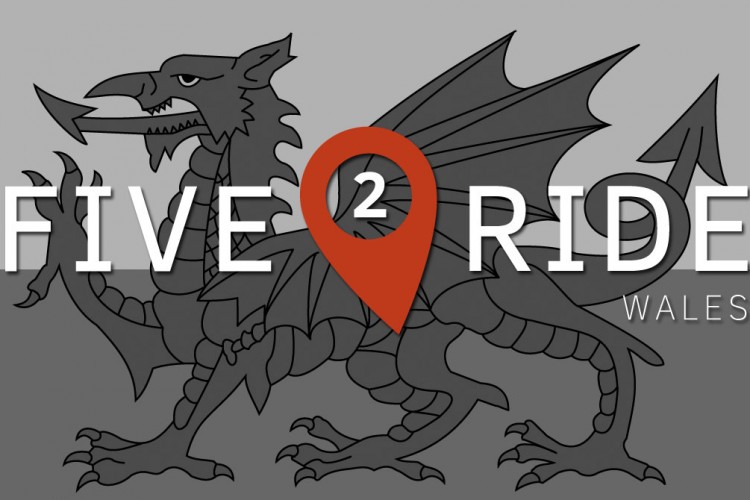
As autumn draws to a close and all the multicolored leaves so many social media posts have been waxing lyrical about lay strewn across the trails, making for a beautiful–if somewhat treacherous–ride, our thoughts turn to winter mountain biking. As mountain bikers are such a dedicated bunch, we’re not the type to let a little extra moisture in the air put us off!
That said, before heading out, no matter how keen you’re feeling, it’s worth considering which trails in your area will hold up to being ridden in wet conditions if you wish to avoid the wrath of your local trail builders. It’s possible that none of your local trails will be rideable during or after a rain. Some soil types, such as clay or pure mud, absorb the water, becoming sloppy and full of puddles. Bikers then cause deep ruts, which remain when the trail drys out. Riders also often widen the trail by attempting to avoid deep puddles, until it becomes just another boggy jeep track. Other areas can take it–usually, those that are loam- or rock-based. In the UK, where it rains a vast amount, most of our trail centres are surfaced and designed to drain well so it’s never a problem to ride. If you are unsure of the correct etiquette for your trails, contact your local mountain bike group or forestry management team.
After living in the notoriously damp country of Wales, here are the top tips I’ve discovered myself or gathered from the natives to make wet weather rides almost fun.

1. Invest in Quality Waterproofs
Perhaps I’m stating the obvious here, but there really is no substitute for a quality GORE-TEX® or similar material waterproof coat. This is one time where shelling out for the pricier brand names tends to be worth it. The research and innovation that goes into designing a jacket with the right balance of water resistance and windproofing, yet remaining, breathable makes the difference. Underneath the waterproof jacket, wearing multiple thin layers that can easily be pulled on and off as exertion levels vary is the best way of staying cozy. Whilst not as vital for keeping warm, a good pair of waterproof shorts/trousers, shoes, and gloves will certainly improve your comfort levels.
2. Time to Get Pedaling!
The die-hard uplift fans might not like this suggestion, but on a rainy day, a cross country ride is a better option for most. The fact that you stay on the bike maintaining a constant effort keeps your body temperature up and your attention focused on something other than the weather. I personally would rather be distracted by puffing and panting my way up a hill with my legs screaming then trudging along pushing the bike. It’s certainly preferable to shivering my way in and out of a cold, miserable uplift bus where the constant stop/go nature of the beast means you never truly warm up.

3. Skip the Coffee Stop
Resist the temptation to dive for cover in the nearest available cozy-looking cafe or pub. Appealing as it may seem at the time, the prospect of heading back out of said lovely warm establishment into the adverse weather conditions soon puts a damper on the experience. It’s often only when you stop that you come to realize how unpleasant the soggy clothing really is, and you soon start to catch a chill when stationary. The best plan of action is to just get the job done.

4. Consider the Trail Surface
When deciding which area to ride in, give a little thought to the soil type in that area. Unless you are specifically after practicing in challenging conditions, clay–which becomes slick like ice–and speed-sapping bogs are best avoided. I find rock- or slate-based areas hold up best in the wet. Undeniably, there will be 1 million puddles and a lot of spray coming up in your face, but they roll much faster, don’t get as eroded, and are generally more predictable surfaces to ride on.
5. Keep it Brief
A rainy day is probably not the best time to head out planning to set your new long distance personal best. Nor is it a great time for exploring off the beaten track. Choose a route you know well that can be completed in a reasonable amount of time without having to stop and examine a map or refuel too often. Often, just knowing it’s a two-hour loop (for example) makes the ride psychologically seem more bearable, because you can always roughly estimate how much longer you have to go. It’s feasible to keep constantly moving and remain upbeat for a shorter loop of this length. The longer you’re out, the more chance of the water seeping through, making you cold and miserable.

6. Aim for Woodland
Plotting the route for a wet weather ride is best done with a bit of cunning. Stick to sheltered forest or woodland–the more densely packed, the better. These are nature’s own version of an umbrella and windshield. Open moorland vistas and bagging mountain tops are best saved for a day when you can actually see the view to appreciate it! A forest in the rain can seem like a magical place when rays of sunshine break through, catching the raindrops dripping off the leaves.
7. Prepare Your Bike
It’s not only the rider that needs kitting out for winter. If you haven’t already fit your bike with a front and rear mudguard, this will stop half as much mud and spray flying up at the rider and will prevent some of the wear and tear on the bike. Choosing a suitable set of tires for winter conditions and running them at a lower air pressure will increase grip and therefore rider confidence in slippy conditions. Longer spikes also reduce the chance of mud clogging up in the tires, grinding you to a halt.
8. Become a Weather Watcher
Stalk your favourite weather channel or app. Timing is everything. How often have you been all keen and M. Motivated, up and out the door by 8am, earning yourself a thorough soaking only to watch the skies clear to sunshine by early afternoon? By which point, you’re now back at home facing the weekly chores–all of which are, of course, indoors. Always check the night before and plan your day accordingly when possible. If a soaking is inevitable it’s not very often heavy rain is forecast all day, so try to at least tackle the open/higher altitude sections of your ride during the dryer times.
9. Pack a Change of Clothes
There are two bits of advice here. If you are heading out for on a longer ride in the rain, pack an extra base layer and buff in a dry bag to change into at the halfway point. Secondly, have a whole change of clothes (including underwear and socks!) waiting for you back at the car. Even if you are still filthy underneath, it is such a pleasant feeling to be warm and dry for the drive home. Your car will thank you, too!

10. Embrace the Situation
Smashing puddles, sliding round corners, spitting mud, and letting rip with many an expletive (or girly scream, if you’re honest) as yet another sniper root jumps out to get you, there is a kind of slight insanity to wet weather riding. In a strange way it’s therapeutic. Getting soaked and filthy is inevitable and as soon as you accept that, there’s a kind of carefree abandonment to embracing the situation and simply playing in the mud like a child.
As you emerge from the quiet of the trails and head back into civilisation looking more than a little dishevelled, you should, without doubt, feel a sense of pride. You have challenged these adverse conditions that dared to keep you from riding. You have survived the increased technicality of slick-as-hell mud, you have waded the bogs, snorkeled through the puddles, and clung on for dear life as the wind tried to whisk you off the cliffside. Yet were you defeated? Of course not! Where there is a bike and there is a trail, there is always smiles for miles. Welcome to the Wet Weather Warrior club.





















4 Comments
Nov 30, 2017
Nov 27, 2017
Nov 27, 2017
Nov 27, 2017